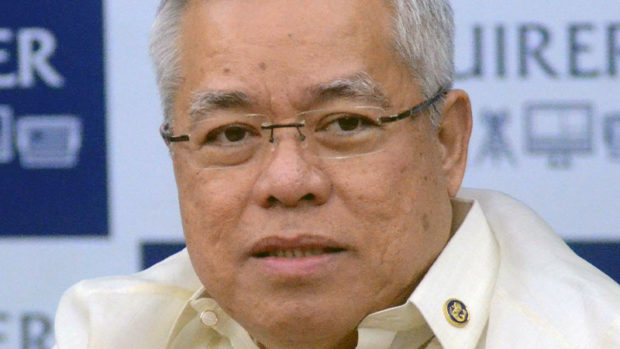The Department of Trade and Industry (DTI) has increased the allowable capacity for dine-in services, personal care businesses and others, although data showed that the pandemic was still far from being under control.
A DTI advisory released to the media on Tuesday detailed the new allowable capacity for certain businesses in Metro Manila and other areas under a general community quarantine (GCQ).
For dine-in services of restaurants, the allowed capacity was increased to 30 percent from 20 percent last month. However, the allowed capacity for outdoor dining was kept at 50 percent, according to DTI Advisory No. 21-09 dated May 31.
Personal care services—including beauty salons, barber shops, and nail spas—can now operate up to 40 percent of their capacity, higher than the 30 percent in the previous month. But the DTI said both the service providers and their customers were required to wear face masks all the time.
Venues for meetings, incentives, conferences, and exhibitions—which were banned from opening last month—are now allowed to operate up to 30 percent of their capacity, while social events in the same establishments can use up to 10 percent of the capacity.
StaySafe.ph
Moreover, business establishments that were awarded with the government’s Safety Seal Certification Program were allowed to increase their operating capacity by another 10 percentage points, the DTI said. This safety seal is supposed to attest that the establishment is compliant to minimum public health standards and that it uses contact tracing with StaySafe.ph.
The latest guidelines, coupled with the Department of Tourism’s decision to let young adults and the middle-aged travel out of GCQ without having to pass swab tests, were issued despite a slow and limited vaccine rollout.
Going slow in reopening
The government has again eased both travel and business restrictions at a time when the positivity rate of the country—which essentially measures the number of people who tested positive against the number of tests conducted — remained far from ideal.
On May 31, Department of Health data showed that the positivity rate in the country was 13.7 percent—nearly three times the positivity rate recommended by the World Health Organization before reopening the economy. According to WHO, an acceptable positivity rate is 5 percent or lower for at least two weeks.
In an online event last month, Trade Secretary Ramon Lopez said he expected Metro Manila and other areas to stay under GCQ in June. He said the government was going slow in reopening the economy because it didn’t want a repeat of the surge in new infections last March and April.
The earlier surge in new infections fueled by new COVID-19 variants had spread faster in an environment where more people were encouraged to go out and spend, after the administration implemented several measures over the past few months to reopen the economy.
“We don’t want that to happen again that’s why we are slowly reopening. Now, we are in GCQ with [with heightened restrictions]. We expect that since the numbers are good, we can still extend the GCQ. We can continue with the GCQ starting June,” he said then.
The surge in new infections earlier this year, which had overwhelmed public hospitals, had prompted the government to reimpose an enhanced community quarantine (ECQ) in Metro Manila and other areas, which was later eased to a modified ECQ, until it got to GCQ with heightened restrictions. INQ


